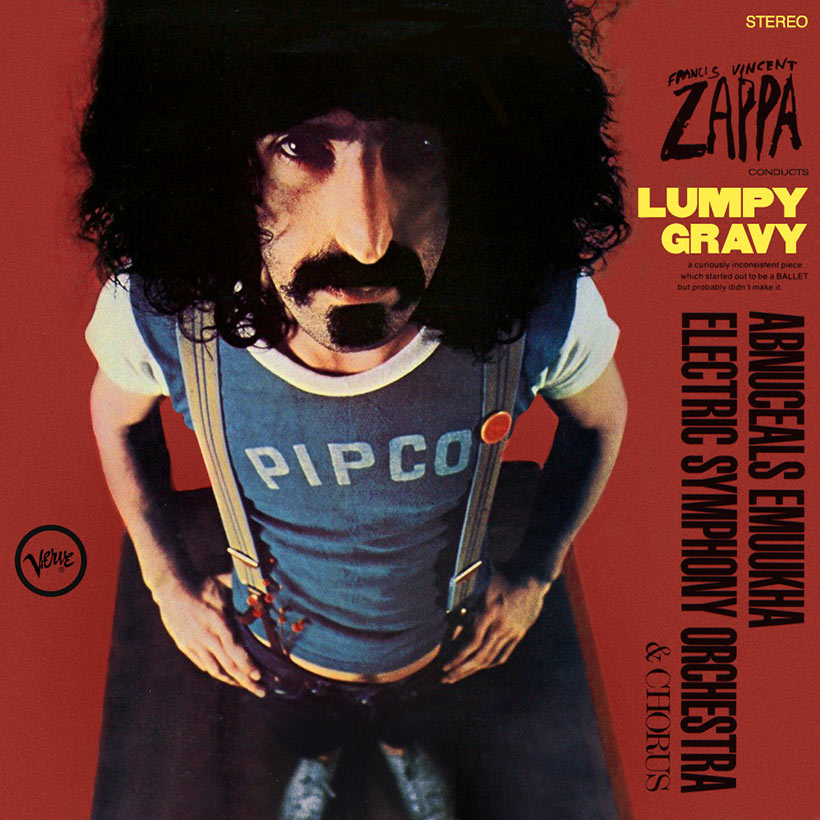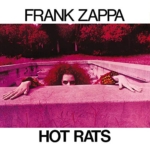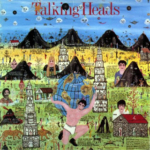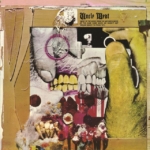
OK, now is probably a good time to discuss Frank Zappa\’s major musical influences considering that this is his first true-blue \”solo\” effort. Most famously, he was a huge fan of both Russian 20th-century composer Igor Stravinsky and French 20th-century avant-garde composer Edgar Varèse. Slightly less famously, he also enjoyed the works of Anton Webern and Béla Bartók. Even less famously, he enjoyed much other modern classical music, but I don\’t have the time and patience to sift through hundreds of Zappa interviews in a quest to hear or read him namedrop some obscure composers. The point is, without any kind of classical training to guide his ear at an early age he gravitated toward this so-called \”serious\” music. And he listened to it recreationally too, like some highfalutin\’ little pretentious piece of shit. So write off Zappa all you want as a novelty act, but rest assured that the bulk of his young artistic influence and much of his methods are rooted deeply in classical. The guy even wrote most, if not all, of his songs in manuscript form. He fancied himself a composer, and by all accounts…why the hell not, right?
Zappa was also big into doo-wop and blues, but it\’s more apt to discuss that on the next review for Cruising with Ruben & the Jets anyway, wouldn\’t you say? Glad we agree!
Lumpy Gravy as an album is intended to compliment We\’re Only in It for the Money as part two of a three-part concept. For me this thread of continuity is very loose, and it doesn\’t hinder the experience in any way if one were to spend his entire life listening to these two albums without that knowledge. There are some musical ideas that are similar, and maybe a couple of themes overlap (such as law enforcement), and one song in two different arrangements shows up in both, but in general these two albums are starkly different. While We\’re Only… is more rock oriented, Lumpy Gravy is more orchestral in structure. Sort of. There are rock elements there too. And spoken-word elements. And jazz elements. It\’s kind of a mess, really.
There\’s actually a whole history to this album that would be rather laborious to get too detailed about here. In a nutshell, Zappa was commissioned by Capitol Records, which wasn\’t his label at the time, to create an album of orchestra music as a composer. He was not contractually allowed to perform on the album himself, so he rounded up a team of session musicians to play his music. These session musicians were kind of assholes about it; they didn\’t take Zappa seriously because he was a scruffy young counter-culture hooligan. They wrote off Zappa all they wanted as a novelty act, just like I accused you, the reader, of doing in the very first paragraph! But, differences were set aside, they realized that Zappa was serious, and everyone became friends! At least that\’s what the Wikipedia article says. The original releasing of the album was pulled shortly after due to some lawsuit scuffle between Captiol and Verve, which was Zappa\’s actual label at the time. While it was pulled, Zappa reworked some of the album, and the final product was released finally in 1968.
A lot of ado for 32 minutes worth of material. The album is broken up into two roughly-16 minute chunks, aptly titled \”Lumpy Gravy Part I\” and \”Lumpy Gravy Part II\” with some sub-section titles. I\’d say there\’s a little more music on Part I compared with Part II, which seems to have more spoken-word bits, but there are no major thematic differences between the two sides. The album as a whole is essentially a hodge-podge collage of musical ideas, concepts, and some vague social commentary. There\’s not much flow to the production, one needs to just go along with the ride.
Let\’s start with the actual music. The orchestra that Zappa wrangled together is made up of nearly 50 individual musicians, which is insane to me considering the recordings sound sparse and high-school-marching-band-esque. Not that it\’s a bad thing, the music bits are honestly absolutely delightful. A lot of this music will show up in other incarnations in many future albums over the course of Zappa\’s career, such as \”Oh No\” (Weasels Ripped My Flesh / Roxy & Elsewhere) and \”King Kong\” (Uncle Meat). Some of the more classical orchestral snippets can be heard in 200 Motels. Frank always fleshed out his musical ideas in real time, and rarely does something ever go away forever. If Lumpy Gravy were the last Zappa album you ever listened to, you\’d be pleasantly surprised at how much of this stuff from this early on sounds very familiar and, thus, memorable. The bad part is, once you start getting into the groove of one melody, you may suddenly get whisked away to a brand new section. But it\’s nice while it lasts. Music gets an A+.
Unfortunately, the actual musical portions of the album makes up about half the time. The other half is made up of monologues and conversations from Frank\’s buddies. Again, there\’s a lot of background detail on some of this that isn\’t worth getting into here, but most of the dialogue is part of the \”piano people\” concept Frank cooked up, which involves recording people talking into an open grand piano and allowing the voices resonate on the piano strings and cause vibrations. Zappa would throw out topics (which are incredibly abstract) and the dialogue would be completely improvised. More expanded dialogue would make up the loose-story backbone of the Civilization Phaze III album, which is part three of the three-part concept! Since it\’s album #70 or so, I\’ll get around to reviewing it in 2051 during Robot-Trump\’s presidency, and there would be the best place to really dig into this dialogue. For now, though, all you need to know is that the piano people live in dark isolation and are obsessed with pigs and ponies, which I believe are allusions to police and hippies. It\’s really dumb, the people talking sound really dumb. This shit gets a D-.
I personally very much enjoy this album in spite of the unreasonably harsh previous paragraph, but I\’d be hard-pressed to admit that I\’ve listened to it more than a dozen times in my life. I can\’t imagine that anyone listens to it recreationally on a regular basis, either, but it serves as a nice little piece of Zappa history that you can throw on from time to time when you\’re in the mood. For this reason, I hesitate to give it anything more (or less) than a middle-of-the-road rating. No one should make this their first Zappa purchase, but no one should make it their last either. Enjoy the music, tolerate the dialog, and wait a year or two before giving it another spin.








Click here to ridicule this post!